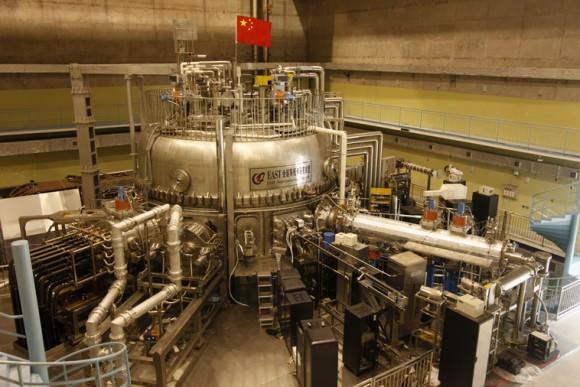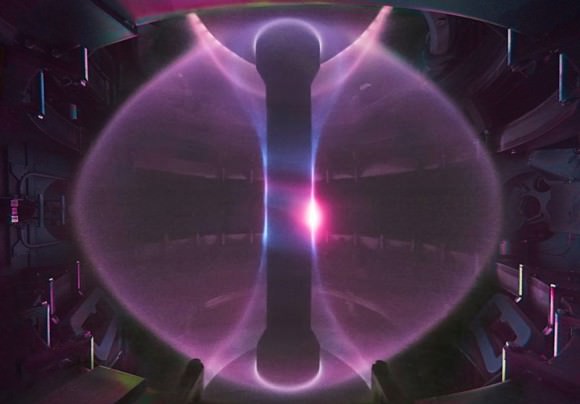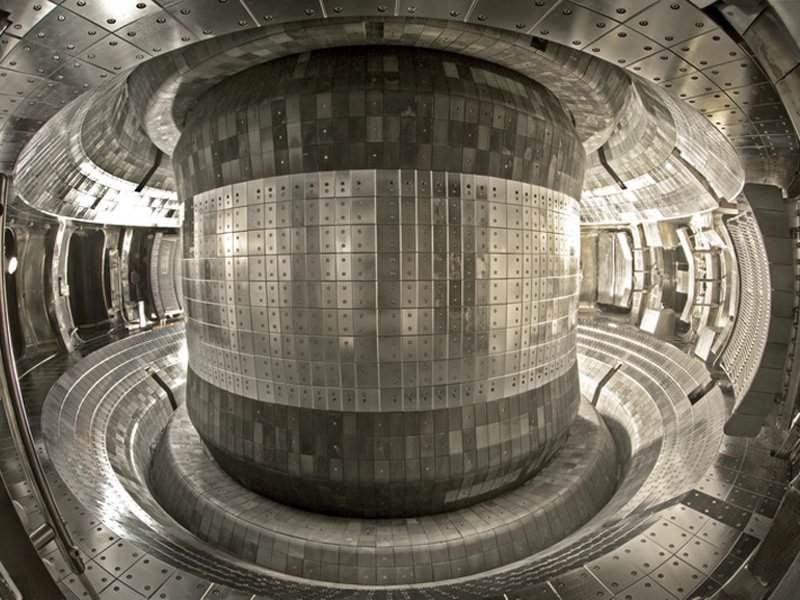Fusion power has long been considered to be the holy grail of alternative energy. Clean, abundant power, created through a self-sustaining process where atomic nuclei are fused at extremely high temperatures. Achieving this has been the goal of atomic researchers and physicists for over half a century, but progress has been slow. While the science behind fusion power is solid, the process has not exactly been practical.
In short, fusion can only be considered a viable form of power if the amount of energy used to initiate the reaction is less than the energy produced. Luckily, in recent years, a number of positive steps have been taken towards this goal. The latest comes from China, where researchers at the Experimental Advanced Superconducting Tokamak (EAST) recently report that they have achieved a fusion milestone.
Many different fusion concepts have been proposed and tested over the years. Currently, the two most popular designs are the inertial confinement approach, and the tokamak reactor. In the former case, lasers are used to fuse pellets of deuterium fuel to create a fusion reaction. In the latter, the process involves a torus-shaped confinement chamber that uses magnetic fields and an internal current to confine high-energy plasma.

Using a tokamak that has three distinct features – a non-circular cross-section, fully superconducting magnets, and fully actively water cooled plasma facing components (PFCs) – scientists at the EAST facility announced last week that they were able to produce hydrogen gas that was three times hotter than the core of the Sun (approx. 50 million °C; 90 million °F), and were able to maintain this temperature for a record-breaking 102 seconds.
This is no small accomplishment, as confinement and sustained temperatures are essential to creating fusion power. Once initiated, fusion reactors need to be able to keep the reaction going for a long period of time, mainly because the amount of energy required to initiate it is considerable. But of course, sustaining and confining such high-energy plasma is quite difficult, and potentially dangerous.
Being able to sustain high-energy plasma for over a minute and a half places the EAST facility, which is part of the Institute of Physical Science in Hefei in Jiangshu, a step ahead in the global fusion race. By recreating the stable conditions under which fusion naturally occurs – i.e. in the Sun’s interior – humanity could be one step closer to the dream of clean and virtually limitless energy.
But of course, there is some skepticism towards this claim. So far, there has only been the announcement made by the Institute of Physical Science to go on. And until such time as peer-reviewed results are provided, the claim will remain unconfirmed. However, should their results be confirmed, it will mean that there is likely to be some competition to see who can get increasingly good results. And that competition may already be on!

Just a few days before the EAST facility announced this milestone, researchers at the Karlsruhe Institute of Technology (KIT) in Germany made an announcement of their own. Here, researchers claimed that the Wendelstein 7-X (W7X) stellarator – the largest fusion reactor of its kind – had successfully managed to produce and sustain hydrogen plasma for the first time.
Similar in design to a tokamak, a stellerator employs twisted rings and external magnets to confine plasma. As one of the best known as examples of a stellarator, the Wendelstein 7-X was able to heat hydrogen gas to a temperature of 80 million degrees Celsius, and sustain that plasma cloud for a quarter of a second. In short, they achieved a reaction that produced more energy, but for much less time.
In the coming years, more news is expected on the fusion front as projects like the International Thermonuclear Experimental Reactor (ITER) go online. Located in the south of France, ITER will employ the world’s largest experimental tokamak reactor and will be the biggest experiment in fusion to date. The EAST facility has indicated that it intends to be directly involved in ITER and will lend their experience and expertise.
Though we are still many years away from fusion reactors solving all of our energy concerns, it is good to know that we are taking the appropriate steps towards making it a reality. Who knows? Someday, our children (or grandchildren) may look back at the early 21st century as the “pre-fusion era” and wonder how it is we ever managed to get by!
Further Reading: Tech Insider, South China Morning Post


I have to say that sustaining a plasma at such a high temperature for over a minute and a half is quite impressive. I wish the article gave a better sense of how much power was required to create and sustain this reaction, and how much usable power (if any) was generated.